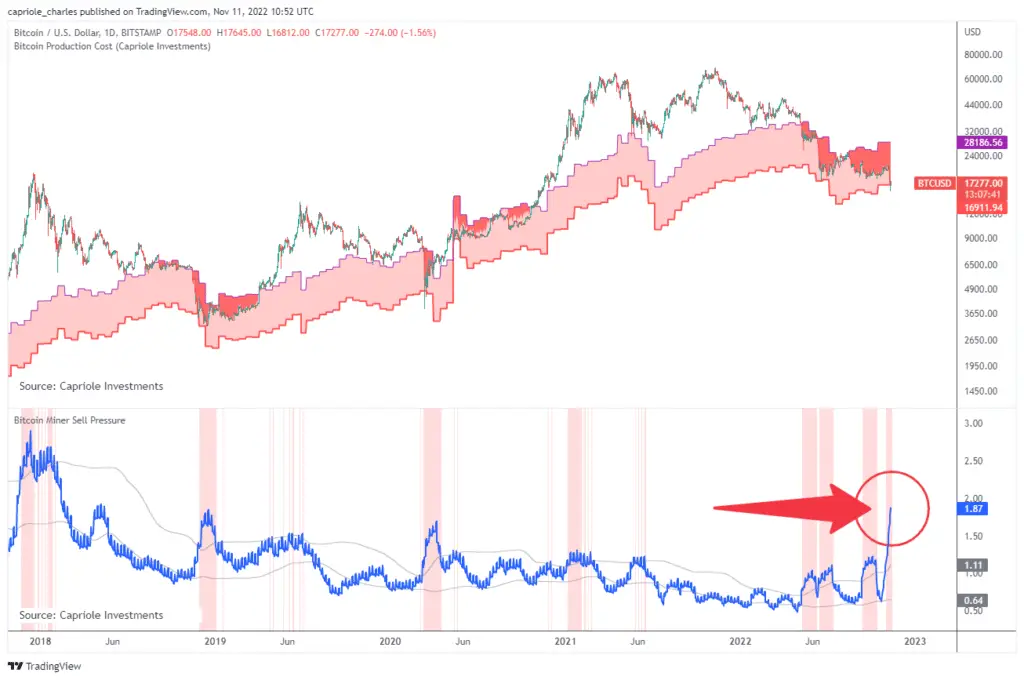A new on-chain metric to track when Bitcoin miners are selling more of their reserves than usual. A common leading indicator of capitulations.
[Originally published on Twitter here: https://twitter.com/caprioleio/status/1591024605640019968]
Introducing: Bitcoin Miner Sell Pressure. A free, open-source indicator which tracks on-chain data to highlight when Bitcoin miners are selling more of their reserves than usual.
The indicator tracks the ratio of on-chain miner Bitcoin outflows to miner Bitcoin reserves.
- Higher = more selling than usual
- Lower = less selling than usual
- Red = extraordinary sell pressure
Today, it’s red. Bitcoin miners are selling more than they have in 5 years.

What can we see now?
Miners are not great at treasury management. They tend to sell most when they are losing money (like today). However, there have been times when they sold well into high profit, such as into the 2017 $20K top and in early 2021 when Bitcoin breached $40K.
Bitcoin Miner Sell Pressure identifies industry stress, excess and miner capitulation. Unsurprisingly, there is a high correlation with Bitcoin Production Cost; giving strong confluence to both metrics. In some instances, Bitcoin Miner Sell Pressure spots capitulation before Hash Ribbons, such as today.
Live indicator and on-chain source code available on TradingView here.
Disclaimer on Backtests
Any Backtest performance returns presented represent hypothetical returns and are meant to simulate how a strategy would have performed during the period shown had the strategy been implemented during that time. Backtested/simulated performance returns are hypothetical and do not reflect trading in actual accounts. Backtest returns are provided for informational purposes only to indicate historical performance had the strategy been implemented over the relevant time period. Backtested performance results have inherent limitations as to their relevance and use. One of the limitations of hypothetical performance results is that they are generally prepared with the benefit of hindsight. In addition, hypothetical trading does not involve financial risk, and no hypothetical trading record can completely account for the impact of financial risk in actual trading, such as the ability to withstand losses or to adhere to a particular trading program in spite of trading losses, all of which can also adversely affect actual trading results. There are numerous other factors related to the markets in general and to the implementation of any specific trading program which cannot be fully accounted for in the preparation of hypothetical performance results, all of which can adversely affect actual trading results. Any and all of these factors mean that no representation is being made that strategies presented here will achieve performance similar to that shown, and in any case, past performance is no guarantee of future performance.




